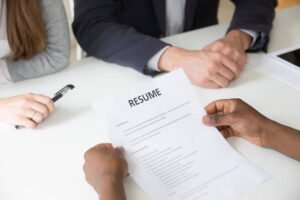You polished your resume, crafted the perfect cover letter, and landed the interview for a job that feels like the perfect next step. Now, as the day approaches, a simple but crucial question starts to loom: exactly how early should you arrive? It may seem like a minor detail, but your arrival time is the very first impression you make, setting the tone for the entire conversation. Getting it right shows professionalism, respect for others’ time, and excellent planning skills.
Navigating this is not just about avoiding tardiness; it is about strategic positioning. Arriving at the optimal moment can give you a psychological edge, allowing you to walk in calm, collected, and ready to shine. This guide will walk you through the art of perfect interview timing for both physical and virtual settings.
The Golden Rule: The 10 to 15-Minute Window
Across the board, hiring managers and career coaches agree that there is a sweet spot for arrival. You should aim to walk into the building or log into the video call approximately 10 to 15 minutes before your scheduled interview time. This is the gold standard of interview etiquette.
This window of time is ideal for several reasons:
- It Shows Respect: Arriving 10 to 15 minutes early demonstrates that you are punctual and value the interviewer’s time without imposing on their schedule.
- It Provides a Buffer: This timeframe is sufficient to handle any last-minute needs, such as checking in with reception, filling out paperwork, finding the restroom, or simply getting a glass of water.
- It Allows for Composure: It gives you a moment to sit, breathe, and mentally review your key talking points. You can transition from the stress of the commute to a calm, professional mindset.
The Dangers of Being Too Early
While you might think arriving 30 or 40 minutes early shows impressive enthusiasm, it often has the opposite effect. Showing up excessively early can inadvertently create an awkward situation for the company and a stressful one for you.
When you arrive too early, you risk disrupting the office flow. The receptionist may not know where to put you, and the hiring manager might feel pressured to interrupt their current task or meeting. This can make them feel rushed and flustered before you have even shaken hands. For you, a long wait in the lobby can build anxiety and make you feel out of place. It is best to avoid this scenario altogether.
What to Do If You Arrive Ahead of Schedule
Planning is essential, and sometimes that means you will get to the location well before that 10 to 15-minute window. If you find yourself with 30 or more minutes to spare, do not go inside. Instead, use that extra time productively.
- Wait in Your Car or a Nearby Café: This is your private staging area. Use this time to review your resume and the notes you have on the company one last time. Practice answering some common interview questions out loud.
- Take a Short Walk: If you are feeling nervous, a brief walk around the block can help clear your head, burn off nervous energy, and get your blood flowing.
- Check Your Appearance: Find a quiet spot to do a final check. Make sure your hair is in place, your clothing is straight, and there is nothing in your teeth. A quick confidence boost can make a big difference.
Timing for the Virtual Interview
In our age of remote work, many interviews happen over video call. While you do not need to worry about traffic, the principle of punctuality remains just as important. For virtual interviews, you should aim to log into the meeting platform 5 to 10 minutes before the scheduled start time.
This buffer is crucial for troubleshooting any technical glitches. Use these few minutes to:
- Test your camera and microphone.
- Check your internet connection.
- Ensure your background is professional and free of distractions.
- Adjust your lighting so your face is clearly visible.
- Close any unnecessary tabs or applications on your computer.
Logging in a few minutes early shows you are prepared and technically competent. It ensures that when the interviewer joins, you are ready to begin the conversation immediately, without any frustrating delays.
Ultimately, arriving for an interview at the right time is a sign of respect and thorough preparation. By targeting that 10 to 15-minute window for in-person meetings and a 5 to 10-minute window for virtual ones, you demonstrate that you are a considerate and reliable candidate, ready to make a great first impression.





